George Kravis’ epic design collection finds a home at the Cooper Hewitt, New York
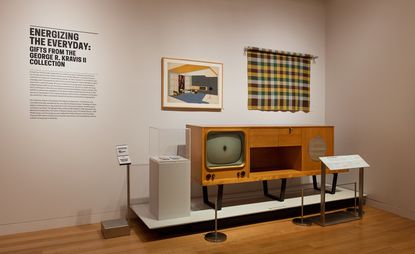
Tulsa design collector George Kravis has long been a pivotal figure when it comes to building up formidable holdings. Now, New York's Cooper Hewitt musem is staging ‘Energizing the Everyday: Gifts from the George R Kravis II Collection’, with more than 100 examples on display.
‘What’s on view encapsulates the evolution and breadth of modern and contemporary design,’ says Caroline Baumann, the Cooper Hewitt's director.
Kravis focused on this specialty at an early age. ‘I began collecting when I was ten and then took on a Bakelite RCA record changer,’ he says. Since then he has explored the entire spectrum of design. The diverse collection spans Alexander Girard’s punchy geometric patterned textiles, to the sleek 1937 Waterwitch outboard motor in gleaming cast aluminum and brass, and onto Shiro Kuramata’s 1978 laminated plate glass armchair.
Other early examples, like Gilbert Rohde’s spare 1934 ‘Z Clock’, made from chrome plated brass and plate glass, and Peter Müller Munks 1935 chromium-plated sheet brass 'Normandie' pitcher are extraordinary in terms of their clean, avant-garde lines. Similarly, Norman Bel Geddes’ 1940 'Patriot' radio in black and red plastic remains just as riveting for its sharp design.
Besides Frank Lloyd Wright’s iconic 1956 copper table from the Price Tower in Bartlesville, Oklahoma, there’s Mathias Bengtsson’s 1999 laser-cut plywood 'Slice Chair', which is right in tune with Tony Cragg’s sculptures. Olafur Eliasson’s 2012 'Little Sun' solar-powered LED lantern in a yellow plastic daisy-like shape is another highlight and surprisingly small for such a powerful statement on energy saving concerns.

‘What’s on view encapsulates the evolution and breadth of modern and contemporary design,’ says Caroline Baumann, Cooper Hewitt’s director. Pictured: Braniff Airways Model 66310 Armchair, c.1968, designed by Alexander Hayden Girard and manufactured by Herman Miller

Pictured: vanity model 3920, 1939, designed by Gilbert Rohde, manufactured by Herman Miller
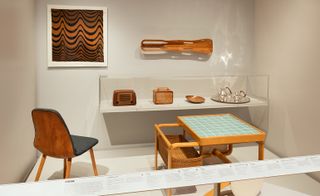
Kravis, who caught the collecting bug at an early age, recalls, ‘I began collecting when I was ten and then took on a Bakelite RCA record changer’

Norman Bel Geddes’ 1940 ’Patriot’ radio (pictured), in black and red plastic, remains just as riveting today
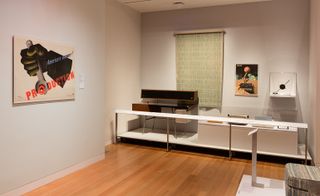
Since then, Kravis’ collection has expanded to span the entire spectrum of design. Pictured: ’America’s Answer! Production’ poster, 1942, designed by Jean Carlu (pictured on wall) and Gilbert Rohde’s ’Z Clock’, 1934 (far right)

Pictured: ’Little Sun’ solar-powered lantern, 2012, designed by Olafur Eliasson and Frederik Ottesen
INFORMATION
’Energizing the Everyday: Gifts from the George R Kravis II Collection’ will be on view until 12 March 2017. For more information, visit the Cooper Hewitt’s website
Photography: Matt Flynn. Courtesy Smithsonian Institution
ADDRESS
Cooper Hewitt, Smithsonian Design Museum
2 East 91st Street
New York, NY 10128
Wallpaper* Newsletter
Receive our daily digest of inspiration, escapism and design stories from around the world direct to your inbox
-
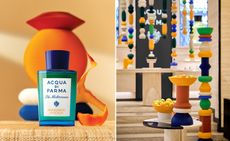 Discover Acqua di Parma’s new Mandarino di Sicilia fragrance at Milan Design Week 2024
Discover Acqua di Parma’s new Mandarino di Sicilia fragrance at Milan Design Week 2024Acqua di Parma and Fornice Objects bring the splendour of Sicilian mandarin fields to Milan to celebrate new fragrance Mandarino di Sicilia
By Simon Mills Published
-
 First look at Samba Room, London’s innovative cocktail lounge packed with Brazilian energy
First look at Samba Room, London’s innovative cocktail lounge packed with Brazilian energyLondon’s Samba Room, an extension of SushiSamba, is a dynamic bar, lounge and private dining space designed by Fabled Studio
By Tianna Williams Published
-
 Thom Browne shows how to make the perfect bed with theatrical performance at Milan Design Week 2024
Thom Browne shows how to make the perfect bed with theatrical performance at Milan Design Week 2024American fashion designer Thom Browne makes his Milan Design Week debut with a new homeware collection created in collaboration with historic linen company Frette
By Scarlett Conlon Published
-
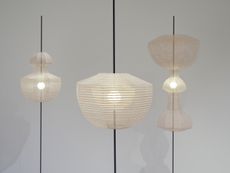 Nendo’s collaborations with Kyoto artisans go on view in New York
Nendo’s collaborations with Kyoto artisans go on view in New York‘Nendo sees Kyoto’ is on view at Friedman Benda (until 15 October 2022), showcasing the design studio's collaboration with six artisans specialised in ancient Japanese crafts
By Pei-Ru Keh Last updated
-
 Italian craftsmanship comes to Los Angeles in this eclectic Venice Canals apartment
Italian craftsmanship comes to Los Angeles in this eclectic Venice Canals apartmentBoffi Los Angeles celebrates a juxtaposition of texture throughout a waterside bolthole
By Hannah Silver Last updated
-
 Design Miami/Basel 2022 explores the Golden Age
Design Miami/Basel 2022 explores the Golden AgeDesign Miami/Basel 2022, led by curatorial director Maria Cristina Didero, offers a positive spin after the unprecedented times of the pandemic, and looks at the history and spirit of design
By Rosa Bertoli Last updated
-
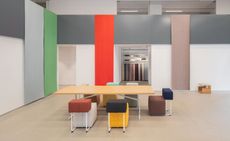 Kvadrat’s flagship New York showrooms encompass colourful design codes
Kvadrat’s flagship New York showrooms encompass colourful design codesIndustrial designer Jonathan Olivares and architect Vincent Van Duysen have worked with Danish textile brand Kvadrat on the vast new space, also featuring furniture by Moroso
By Hannah Silver Last updated
-
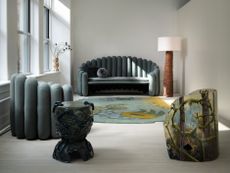 What to see at New York Design Week 2022
What to see at New York Design Week 2022Discover Wallpaper’s highlights from New York Design Week 2022 (10 – 20 May 2022): the fairs, exhibitions and design openings to discover
By Pei-Ru Keh Last updated
-
 Colour defines LA ceramics studio and showroom of Bari Ziperstein
Colour defines LA ceramics studio and showroom of Bari ZipersteinStep inside the multifunctional ceramics studio, office and showroom of designer and artist Bari Ziperstein, designed by local firm Foss Hildreth
By Pei-Ru Keh Last updated
-
 Design for Ukraine: Bocci and Design Miami join forces to raise funds
Design for Ukraine: Bocci and Design Miami join forces to raise fundsThe online sale of iconic Bocci pieces will benefit GlobalGiving’s Ukraine Crisis Relief Fund, providing urgently needed humanitarian aid
By Rosa Bertoli Last updated
-
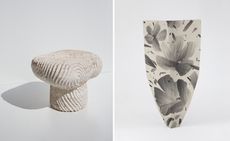 The Future Perfect celebrates materiality in new Los Angeles exhibition
The Future Perfect celebrates materiality in new Los Angeles exhibitionCoinciding with Frieze LA, a new exhibition titled ‘Momentary Pause’ (17 February – 18 March 2022) explores material-based practices that inspire change
By Hannah Silver Last updated